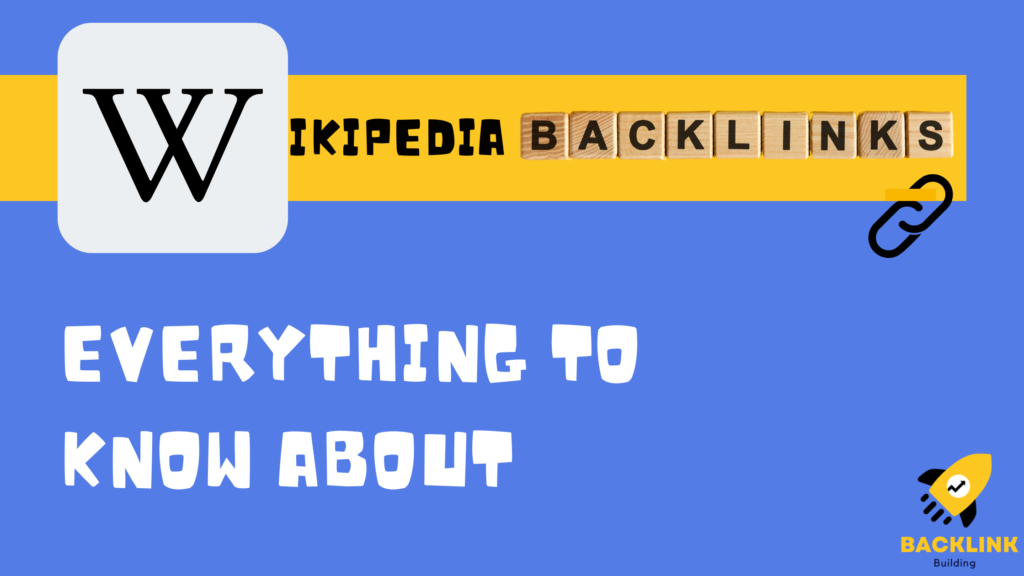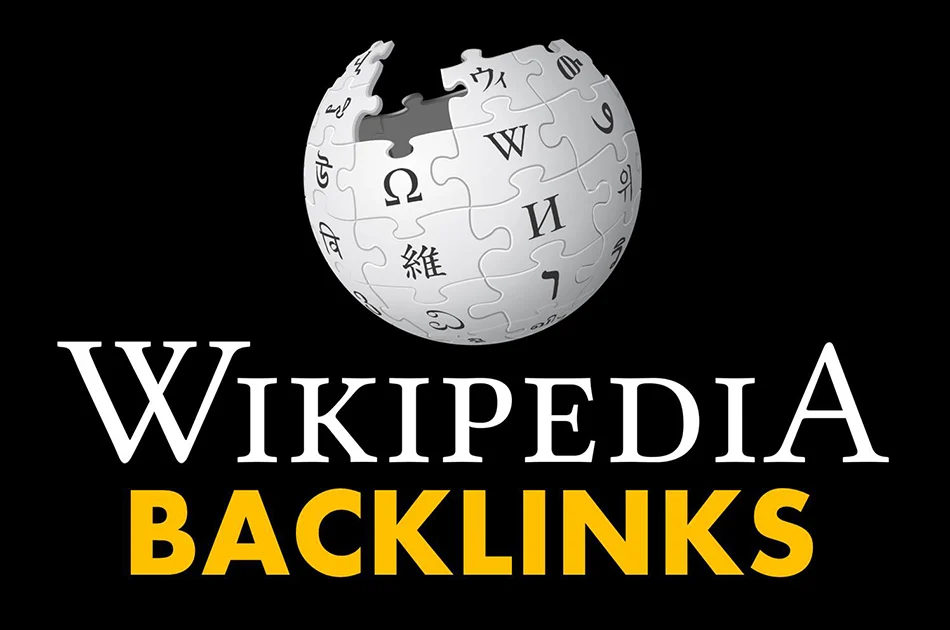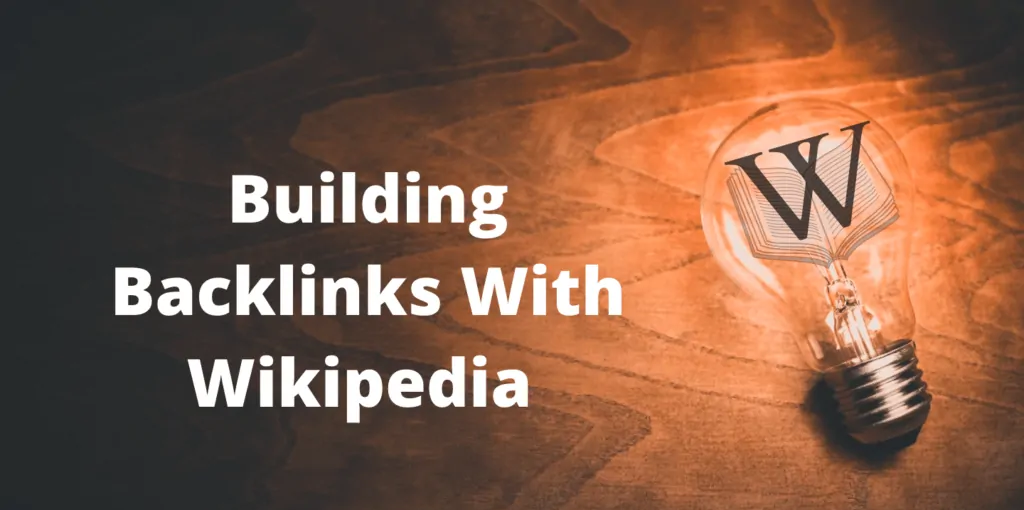
What are backlinks? In the simplest terms, backlinks are links from other websites that lead back to your website. They are an essential part of SEO (search engine optimization) because they help improve your site’s ranking on search engines. There are different types of backlinks, and in this blog post, we will discuss Wikipedia backlinks in particular. We’ll cover why they matter, how to build them, and some common mistakes people make with them.
One of the most important things to know about backlinks is that not all backlinks are created equal. There are different types of backlinks, and each type impacts your website’s SEO. For example, links from high-quality websites (like Wikipedia) are more valuable than links from low-quality websites. This is because search engines view links from high-quality websites as endorsements of your website’s content. On the other hand, links from low-quality websites can hurt your website’s ranking.
Types Of Backlinks

There are three main types of backlinks:
- Do-Follow Backlinks: These are the most valuable types of backlinks. A do-follow backlink is a link that passes along SEO benefits (like increased ranking) to the linked-to website. In other words, when a high-quality website links to your website, it’s like they’re saying, “Hey, this content is good!” This tells search engines to pay attention to your website and consider it when determining rankings.
- No-Follow Backlinks: These links don’t pass along SEO benefits. However, they’re still important because they help build relationships with other websites. For example, if you have a blog post getting a lot of traction, other websites may link to it even if they’re not passing along SEO benefits. This helps increase your website’s visibility and build relationships with other websites in your industry.
- Broken Backlinks: These are backlinks that lead to pages that no longer exist. They can hurt your website’s ranking because they tell search engines that you’re linking to outdated content or pages that don’t exist.
What Are Wikipedia Backlinks?

Wikipedia backlinks are backlinks from Wikipedia articles to your website. They are valuable because Wikipedia is a high-quality website with much authority. When you get a backlink from Wikipedia, it’s like getting an endorsement from a trusted source. This can help improve your website’s ranking on search engines.
Well, Wikipedia backlink are no-follow backlinks. This means that they don’t pass along SEO benefits. So why bother with them? There are a few main reasons:
They Help Build Relationships With Other Websites
As we mentioned, backlinks are a great way to build relationships with other websites. When you have a backlink from Wikipedia, it shows that you’re an authoritative source of information. This can help you build relationships with other websites in your industry.
They Can Lead To Increased Traffic
Even though Wikipedia backlinks don’t pass along SEO benefits, they can still lead to increased traffic. This is because people will see the backlink and click on it out of curiosity, and from this scenario, you can generate traffic from high-quality sites.
They Can Help Improve Your Website’s Ranking
While Wikipedia backlink don’t directly impact your website’s ranking, they can indirectly impact it. This is because they increase your website’s visibility, leading to more backlinks from other websites. And as we know, backlinks are a significant ranking factor.
They Can Help You Get Featured In Google’s Knowledge Graph
The Knowledge Graph is a box that appears on the right side of Google’s search results. It contains information about a specific topic. If you have a backlink from Wikipedia, there’s a good chance you’ll be featured in the Knowledge Graph. This can lead to increased traffic and brand awareness.
How Does Wikipedia Work?
Wikipedia is a collaborative platform that anyone can edit. This means that anyone can add or remove content from Wikipedia articles. However, some guidelines must be followed when editing Wikipedia articles. These guidelines are in place to ensure that only high-quality, accurate information is added to Wikipedia.
However, Wikipedia has a team of editors who review changes before they’re published. This helps ensure that only high-quality, accurate, verified information is added to articles. This means it must be sourced(verified) reliable source. Otherwise, it will be removed.
These guidelines help ensure that the information on Wikipedia is of high quality. And because of this, backlinks from Wikipedia are precious.
If you want to add a backlink to your website on Wikipedia, you first need to find an article relevant to your website. Then, you can add a backlink to your website in the “References” section of the article.
How To Get Wikipedia Backlinks?

How to get backlinks from Wikipedia? Now that you know the value of Wikipedia backlink. Let’s take a look at how to build them. Three main ways to build backlinks on Wikipedia are:
- Add backlinks to existing articles
- Create new articles
- Fix dead/broken links
Let’s take a closer look at each method.
- Adding Backlinks To Existing Articles
This is the easiest way to get started with Wikipedia backlink. All you need to do is find an article relevant to your website and add a backlink to your website in the “References” section.
To do this, click on the “edit” button at the top of the page. Then, scroll down to the “References” section and add your backlink.
- Creating New Articles
This is a more advanced method, but it’s also more effective. Creating new articles gives you more control over the content and allows you to include backlinks to your website in multiple places.
To create a new article, first, you need to find a topic that doesn’t have an article yet. Then, you can create an article about that topic. Be sure to include backlinks to your website in the “References” section as well as throughout the body of the article.
- Fixing dead/broken links
Dead/Broken links are nothing but the links which are not working, such as “Page Not Found (404)”. When you come across such links, you can report them to Wikipedia.
This is a great way to build backlinks on Wikipedia and help the community simultaneously. You can also add backlinks to your website in the “References” section of these articles.
To find dead or broken links, search on Google for “site:wikipedia.org [topic].” This will show you all of the articles about that topic on Wikipedia. Then, you can go through and fix any dead or broken links. Other tools to find dead/broken links are
- Dead link checker
- WikiGrabber
Now that you know how to build backlinks on Wikipedia, it’s time to find some backlink opportunities.
How To Find Wikipedia Backlinks Opportunity?
There are online tools that can help you with your SEO effort. Here are two ways to find Wikipedia backlinks opportunities.
- WikiGrabber
WikiGrabber is a free tool that allows you to find backlink opportunities on Wikipedia. Enter a keyword into the search bar, and WikiGrabber will show you a list of articles that need citations or have dead links.
Once you get the articles that need citations or have dead links, you can use the filtering system. Once you find a requirement relevant to you, visit the page by clicking on the link. Then, hit ctrl+F to locate the dead link on the page. Once you find the dead link, add your backlink in the references section.
- Google Search
You can also find backlink opportunities by doing a Google search for your keyword. Then, click on the “Wikipedia” tab at the top of the search results. This will show you all of the articles about that keyword on Wikipedia.
You can even use google advanced search. simple enter, site:wikipedia.org + “search term” + “dead link”. This will give you all the articles with a dead link for your search term.
How To Insert Your Wikipedia Backlinks?
Now that you know how to find backlink opportunities, it’s time to insert your backlinks.
Step 1: Pick A Dead Link
The first step is to find a dead link on the page. Which you know how to do it? Identify dead links that have more backlinks. And for finding the backlinks, you can use tools like Ahrefs, SEMrush, etc.
Step 2: Create Your Wikipedia Account
If you don’t have a Wikipedia account, you’ll need to create one. This is a quick and easy process. Go to the Wikipedia homepage and click on the “Create account” link in the top right-hand corner.
Enter your username, password, email address, and date of birth. Then, click on the “Create your account” button. You’ll need to verify your email address before you can start editing Wikipedia articles.
Step 3: Choose Your Source Content
Now that you have a Wikipedia account, it’s time to choose your source content. This is the content you’ll use to replace the dead link on the Wikipedia page.
Your source content can be anything from an article on your website to a video, infographics, or podcast. Just make sure that it’s high-quality and relevant to the topic of the Wikipedia page.
Step 4: Insert the Link on the Target Wikipedia Page
Once you have your source content, it’s time to insert the link on the target Wikipedia page. To do this, click on the “Edit” button at the top of the page.
Make sure to add a brief description of your source content so that readers know what they’re clicking on. Then, please scroll down to where the dead link is and delete it. Once you’ve deleted the dead link, add your backlink in its place.
Step 5: Preview Your Changes
Before you save your changes, it’s essential to preview them first. This will allow you to ensure that everything looks good and that there are no errors.
To preview your changes, click on the “Preview” button at the top of the page. Then, please scroll down to where your backlink is and make sure it looks good.
If everything looks good, click on the “Save changes” button. Then, keep your fingers crossed and hope your changes get approved by the Wikipedia moderators.
Step: 6: Changes approved
Once you submit your changes, they will be in the pending queue awaiting approval. The Wikipedia moderators will review your changes and decide whether to approve or reject them.
FAQs
How Does Wikipedia Work?
Wikipedia is a collaborative platform that allows anyone with an account to add, edit, or delete articles. However, moderators must approve all changes before they go live.
What Are Unique Backlinks?
Unique backlinks point from one website to another and only exist once. Unique backlinks are more valuable than non-unique backlinks because they’re harder to get.
How Many Backlinks Can I Add To A Wikipedia Page?
There’s no limit to the number of backlinks you can add to a Wikipedia page. However, it’s important not to go overboard with your backlinking. If you add too many backlinks, it will look spammy and could get you banned from Wikipedia.
How Long Does It Take For Backlink To Show Up On Wikipedia?
It can take a few hours to a few weeks for your backlink to appear on the page. However, sometimes, it can take up to a week or longer. It depends upon the moderators of that particular Wikipedia page.
Will A Backlink Gets Removed From Wikipedia?
If your backlink is live on Wikipedia, there’s a chance that it could get removed. This could happen for several reasons, such as if the page is deleted, it is not relevant to the page’s topic, or if tackling is considered spammy.
However, there’s also a chance that your backlink could stay live on the page for years. It all depends on the Wikipedia moderators’ feelings about your backlink.
Conclusion
The above guide taught you everything about backlinks, what Wikipedia backlinks are, why Wikipedia backlinks matter, backlinks wikipedia SEO, and how to create backlinks in wikipedia.
If you follow the steps carefully, you can easily add backlinks on Wikipedia and boost your website ranking. Additionally you can buy wikipedia backlinks from authentic buyer. Remember not to go overboard with your backlinking, and always choose high-quality source content.
Do you have any questions about backlinks or Wikipedia Backlinks? Leave a comment below and let us know. We’ll be happy to help!


